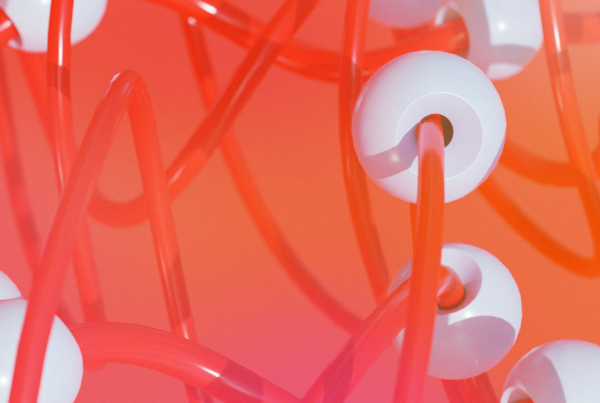We say change is the only real constant, but even the natural shifts we anticipate are shape-shifting. In a world that’s faster, fickler, more turbulent and tenacious, where’s the opportunity to thrive? Nathan Hendricks, Chief Creative Officer at LPK, has a point of view.
Remember the Metaverse? How about Blockchain? Functioning supply chains? IoT? CRISPR? #MeToo? The Occupy movement? Consumer loyalty? Remember when work was a place?
Contemporary humans have always dealt with their fair share of change, but this is a bit much, don’t you think? The pace and volume of change have reached levels that are impossible to keep track of. Constructing a coherent picture of our current reality? Forget it. Change is now faster, more volatile and more dramatic than ever. It’s the elephant in the elevator. Remember elevators? We used to ride in lots of them.
“For businesses, change tends to introduce
risk—not something most relish.”
What Change Does to Us
Now that change is pushing its weight around, it’s no surprise we live in a world that’s gently freaking out. Human beings generally avoid change. It reacquaints us with a grand constellation of anxieties—from our basic fear of the unknown to profound dread of a loss of identity or social standing. For businesses, change tends to introduce risk—not something most relish. It shakes the confidence of organizations, encouraging a devotion to the familiar and a willful blindness to future opportunities. Navigating change requires effort and imagination. People generally avoid that too. They’d rather clinch and retrench.
“The reality is that every change is an opportunity for growth.”
Another Take on Transitions
Come on! We know that there’s another story of change. We’ve read the books. We’ve heard the success stories of businesses that exploited change and the cautionary tales of businesses that avoided it. The reality is that every change is an opportunity for growth. Category variables change. Playing fields rearrange. Dominant players can become vulnerable and traditional barriers to markets can become surmountable.
In a world where everyone’s gently (or not so gently) freaking out, there’s no better time to allow change to fuel your business. It will, however, require a change in your relationship with change.
You May Need Therapy
Similar to people, a business’s aversion to change will put limits on its ability to take advantage of future opportunities. So, how do you replace fear of change with something akin to curiosity? In exposure therapy, people are gradually exposed to the things, situations and activities they fear. It can help treat several conditions, like phobias, PTSD and panic attacks.
Businesses can benefit from a similar approach. At LPK, we employ a forecasting methodology called Future Fluency. It uses lateral thinking to fuel “if this, then that” analysis, focusing on uncovering and anticipating patterns of change over time, ultimately translated to insight and foresight. The approach isn’t unlike exposure therapy, inserting brands into potential future scenarios—arguably making them more adaptable, if not high-functioning, in that version of tomorrow. This gives businesses the confidence that comes from directional knowledge, illuminating new realities and anticipating alternate futures. And with this level of change-readiness, there’s no need for the swashbuckling heroics (or luck) found in business books.
Firing Better Bullets
In a world of change, it’s important to get comfortable experimenting. “Fire bullets, then cannonballs” is a concept developed in Jim Collins’ book Great by Choice. First, you fire bullets (low-cost, low-risk, low-distraction experiments) to figure out what will work. Then, once you have empirical validation, you fire a cannonball (concentrating resources into a big bet). The goal is to turn small, proven ideas (bullets) into huge hits (cannonballs). Many businesses have adopted this approach as a way to mitigate risk and lower the anxiety associated with change.
Unfortunately, many innovation efforts run out of runway and optimism because their bullets never hit anything worth a cannonball. But with a Future Fluent approach, businesses can wield timely and transformative insights to improve the aims of their business experiments.
“When the world feels this unsettled, it’s comforting to keep in mind that there are some things that stay the same. One of those things is people.”
Some Things Never Change
When the world feels this unsettled, it’s comforting to keep in mind that there are some things that stay the same. One of those things is people. There’s very little difference between us and our Paleolithic ancestors. We want the same things. From the basics, like food, shelter and family to other motivations like status, belonging and order. At LPK, we think of these as the hard-wired desires that drive behavior now and in the future. They anchor our understanding of how people are responding to changes in the surrounding culture. And they help businesses build memorable brands that produce things that aren’t just feasible and viable, but desirable—things people actually want.
Shaped for the Shape of Things
Ultimately, winning businesses will be the ones able to consistently deliver seamless, useful, and beautiful experiences connected around a single resonant brand idea. It means creating brands that are hardwired for innovation and innovations that are hardwired to their brand. At LPK, we’ve shaped our consultancy to help businesses create both of those things—applying brand strategy, design and innovation expertise in seamless ways that help brands and businesses thrive in a world of change.
A Gift, Not a Threat
Every change is an opportunity for growth. And with so much change in the world, it’s reasonable to assume that opportunities abound. The businesses that view change as a gift—not a threat—will certainly avail themselves of more of the opportunities change offers.
The good news is this: by mastering the blend of brand and innovation, change will go from an elephant in the elevator to an exciting phenomenon to relish.
Want to dive deeper on this topic? Reach out to us, and subscribe to our newsletter for more.








